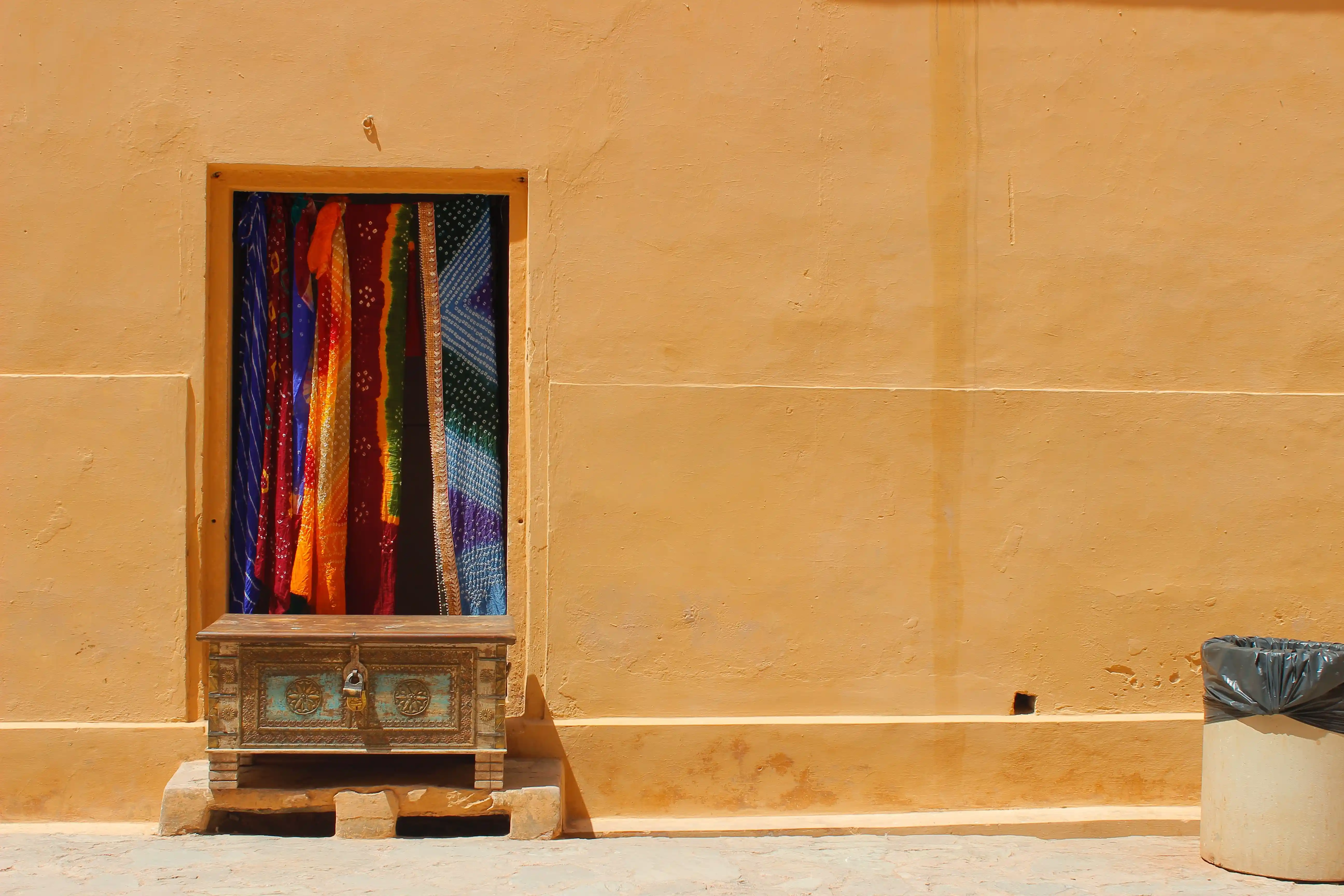The Warp and Weft of Pride!
Looking for a reason to flaunt your phulkari dupattas or ikat kurtas? We got you covered. This National Handloom’s Day, proudly wear those pieces of art and pure love lying at the back of your closet as we honour those who are tirelessly weaving the fabric of our nation.

A Handicraft/Handloom Shop Inside the mighty Amer Fort, Jaipur, Rajasthan, India; Image Source: Unsplash/Varun
In memory of the Swadeshi Movement launched in 1905, and as an honour to all weavers in the handloom industry, National Handloom Day has been celebrated on this day every year since 2015.
The date holds immense significance for the nation, as it was on August 7, 1905, that the formal proclamation for the Swadeshi Movement to promote domestically manufactured products and the boycott of foreign made goods was made in a meeting in the Calcutta Town Hall.
‘Swadeshi’ and ‘swarajya’, the two needles that knit the fabric of India’s struggle for freedom, exemplified the ideas of self - reliance, patriotism, and hardwork. In an attempt to revive those ideas and promote handmade and hand woven products, Prime Minister Narendra Modi inaugurated the first National Handloom Day in Chennai in 2015.
Mahatma Gandhi once said, “I believe that the yarn we spin is capable of mending the broken warp and weft of our life.”
A labour intensive industry, where every design and motif is made with utmost care and passion, the Handloom sector employs nearly 4.33 million weavers in India, becoming only the second largest source of employment to people, after agriculture. Handloom Industry is thus an important source of livelihood for men and women alike. In fact, 70% of handloom weavers and allied workers are women!
With the largest and most widespread weaving industry in the world, more than 95% of handloom across the globe is from India. With the trending debate on sustainable and eco - friendly clothing, khadi undisputedly takes precedence. Khadi, derived from 'khaddar', is a general term for hand spun fabric, and can refer to any natural fabric, including cotton, silk, or jute.
Did you know that while any factory produced fabric consumes nearly fifty-five litres of water for manufacturing one metre of cloth, khadi consumes only about three litres thus making its carbon - footprint almost equivalent to zero.
An integral symbol of our country’s glorious heritage, handloom’s popularity has increased leaps and bounds with the globally acknowledged ‘khadi and saree diplomacy’. Not only a tool of political statesmanship, handloom has also become a growing favourite among the fashion designing industry. Available in varieties of sarees, shawls, scarves, carpets, towels, furnishings, and traditional ‘angavastrams’, the handloom fabric has certainly proved its diversity.
From Pashmina and Kani shawls in the North to Kancheepuram silk and Salem fabric in South; from Patan Patola prints and Kota Doria in the West to Muga Silk and Baluchari and Bomkai Sarees in the East, almost every state of India has a handloom speciality of its own. From fabric choices to prints to embroideries, handloom spoils us for choice.
More than 60 varieties of handloom fabrics in India have been recognized with the Geographical Indication (GI) tag.
In recent years, an attempt to revive the cultural heritage of handlooms has been made by both individuals and the Government. Recent Twitter campaigns of #Vocal4handmade, #iwearhandloom, and e-commerce initiatives such as ‘e-dhaga’ are steps in the right direction. The recently launched “solar charkha” scheme has also been set up to benefit artisanal clusters.
In order to support the Indian craft and to boost the morale of the weavers, every year artisans and weavers are presented with ‘Sant Kabir’ awards. We can each do our bit by consciously choosing handlooms over mill-produced fabric and contribute to the environment, preserve our culture, and support rural livelihoods, all at once!


